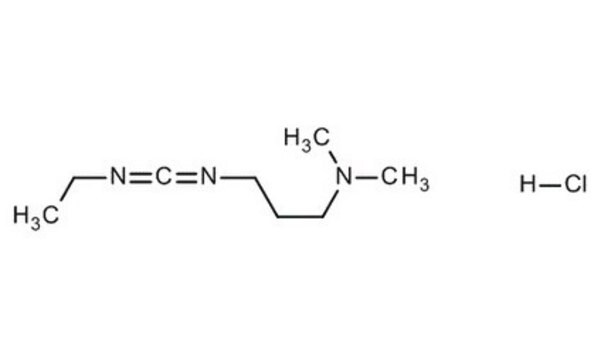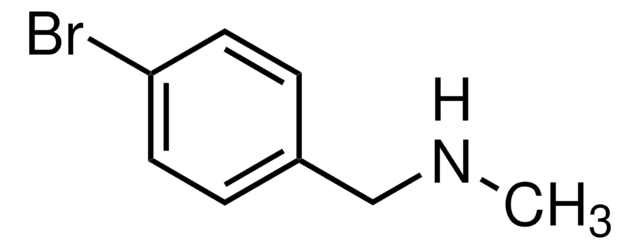N21804
3-Nitrophenylhydrazine hydrochloride
98%
Synonym(s):
(3-Nitrophenyl)hydrazine hydrochloride, 1-(3-Nitrophenyl)hydrazine hydrochloride, 3-Nitrophenylhydrazine monohydrochloride, m-Nitrophenylhydrazine hydrochloride
About This Item
Recommended Products
Assay
98%
form
powder
mp
210 °C (dec.) (lit.)
SMILES string
Cl.NNc1cccc(c1)[N+]([O-])=O
InChI
1S/C6H7N3O2.ClH/c7-8-5-2-1-3-6(4-5)9(10)11;/h1-4,8H,7H2;1H
InChI key
BKOYKMLGFFASBG-UHFFFAOYSA-N
General description
Application
<li><strong>Derivatization agent in analytical chemistry:</strong> 3-Nitrophenylhydrazine hydrochloride is employed as a derivatization agent for the determination of gamma-Hydroxybutyric acid in biological samples infected with Herpes Simplex Virus-Type 1, utilizing LC-MRM-MS techniques, providing enhanced detection capabilities in forensic and clinical toxicology (Osinaga et al., 2022).</li>
<li><strong>Residual analysis in pharmaceutical formulations:</strong> This compound is also used for the quantitative analysis of residual 4-nitrobenzaldehyde in chloramphenicol and its pharmaceutical formulations, employing HPLC with UV/Vis detection after derivatization with 3-nitrophenylhydrazine, offering a reliable method for ensuring the purity and safety of pharmaceutical products (Luo et al., 2018).</li>
<li><strong>Forensic application in decomposition analysis:</strong> Used to derivatized the blood samples collected at the time of forensic autopsy (Matoba et al., 2022).</li>
</ul>
Signal Word
Warning
Hazard Statements
Precautionary Statements
Hazard Classifications
Acute Tox. 4 Dermal - Acute Tox. 4 Inhalation - Acute Tox. 4 Oral - Eye Irrit. 2 - Skin Irrit. 2 - STOT SE 3
Target Organs
Respiratory system
Storage Class Code
11 - Combustible Solids
WGK
WGK 3
Flash Point(F)
Not applicable
Flash Point(C)
Not applicable
Personal Protective Equipment
Certificates of Analysis (COA)
Search for Certificates of Analysis (COA) by entering the products Lot/Batch Number. Lot and Batch Numbers can be found on a product’s label following the words ‘Lot’ or ‘Batch’.
Already Own This Product?
Find documentation for the products that you have recently purchased in the Document Library.
Customers Also Viewed
Our team of scientists has experience in all areas of research including Life Science, Material Science, Chemical Synthesis, Chromatography, Analytical and many others.
Contact Technical Service








